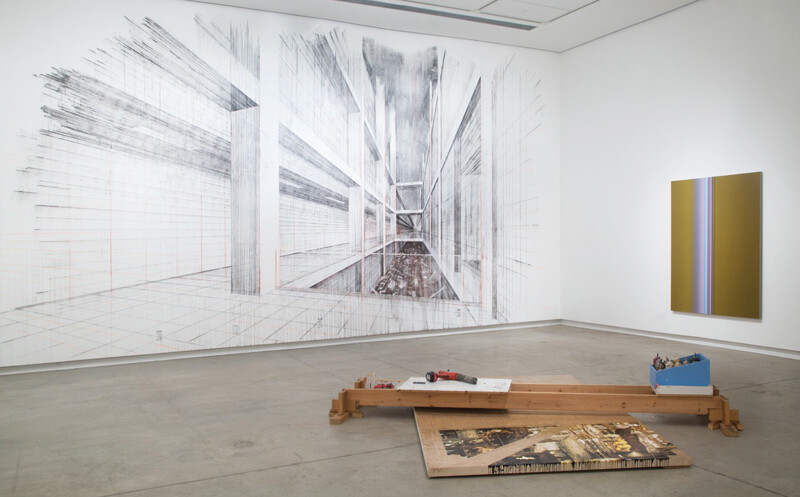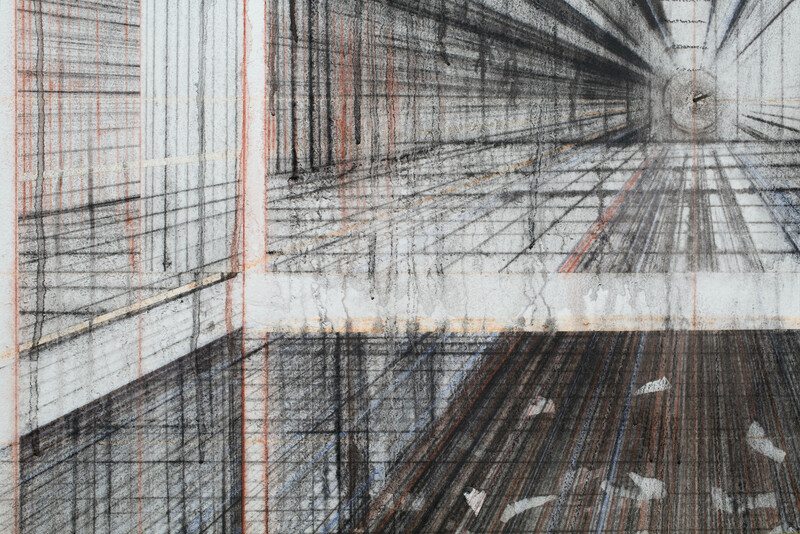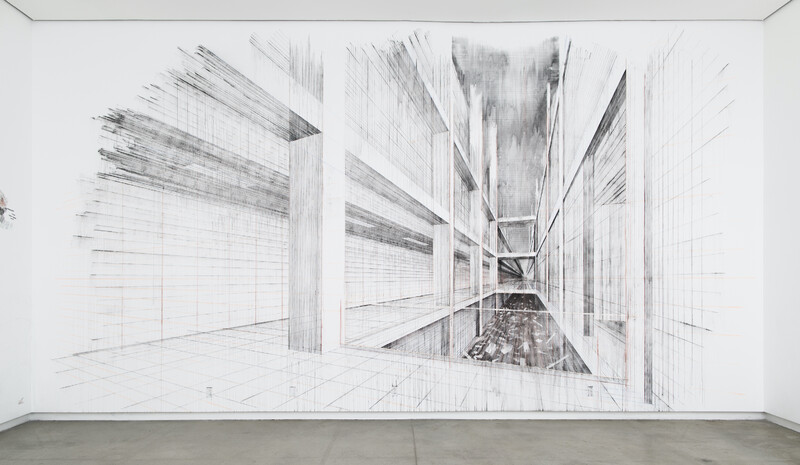


Reverse Obsolescence (Deerfield Hall)
In Reverse Obsolescence (Deerfield Hall), Toronto artist Mark Bell created a perspectival rendering of an atrium interior in University of Toronto Mississauga’s recently constructed Deerfield Hall (2014, Perkins + Will Architects) improbably reimagined in a future state of ruin. We are perhaps reminded of Nazi architect Albert Speer’s grandiose plan of designing public buildings with their eventual decay in mind, to imitate the grandeur and romance of Ancient Roman ruins.
In creating Reverse Obsolescence…, Bell used a chalk line tool to draw the orthogonals of perspective that structure his precise if crumbling interior view of Deerfield Hall’s atrium — a view he derived from the architects’ speculative rendering of the space prior to construction. In the finished work, Bell misted the wall with water, allowing the denser areas of chalk to bleed into one another, creating greater contrast in some areas while obliterating information in others in order to suggest the artwork’s destruction. The illusion of water damage to the wallwork is echoed in the depiction of the atrium’s lower level as filled with floodwater and floating detritus.
Bell’s pronounced use of one-point perspective refers to the markedly schematic and artificial construction of space found in Christ Washing His Disciples’ Feet, a mural-scaled painting by Venetian Renaissance artist Jacopo Tintoretto in the collection of the Art Gallery of Ontario that Bell has long been fascinated by. In a cheeky gesture that punctuates the contrivance of perspectival calculation, Bell has left the nail in the wall that marks the artwork’s central vanishing point and served as an anchor for his myriad chalk-line snaps.

The Blackwood
University of Toronto Mississauga
3359 Mississauga Road
Mississauga, ON L5L 1C6
[email protected]
(905) 828-3789
The galleries are currently closed.
Facebook | Twitter | Instagram
Sign up to receive our newsletter.
The Blackwood is situated on the Territory of the Mississaugas of the Credit, Seneca, and Huron-Wendat.